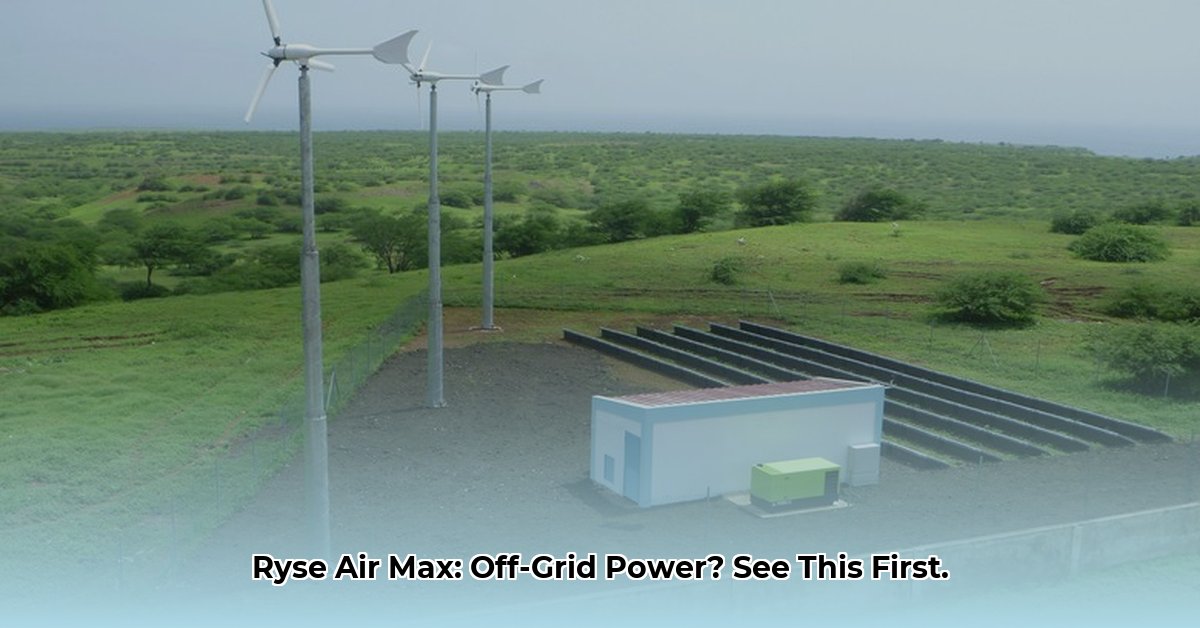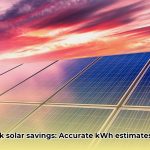Harnessing the Wind: Ryse Air Max Review & Installation
This guide provides a comprehensive look at the Ryse Air Max wind turbine, covering its technical specifications, performance potential, installation process, and overall value proposition. Whether you’re a seasoned off-grider or just beginning to explore renewable energy, this guide will help you determine if the Ryse Air Max is the right fit for your needs.
Tech Specs: Decoding the Air Max
The Ryse Air Max is a compact wind turbine designed for supplemental power generation. Here are its key specifications:
| Feature | Specification |
|---|---|
| Rated Power Output | 400W |
| Energy Output | ~90 amp-hr/day @ 5.5 m/s (12 mph average) |
| Swept Area | 1.07 m² (11.5 ft²) |
| Rotor Diameter | 1.17 m (46 in) |
| Weight | 5.9 kg (13 lb) |
| Startup Wind Speed | 3.13 m/s (7 mph) |
| Survival Wind Speed | 40.2 m/s (90 mph) |
| Voltage | 12, 24, and 48 VDC |
| Mounting | 1.5″ Schedule 40 pipe (48mm outer diameter) |
| Blades | Silent X Carbon Fiber |
| Warranty | 3 years (extendable to 5) |
These specs suggest a lightweight and durable turbine, but real-world performance depends on several factors.
Performance: Powering Your Needs?
Ryse claims the Air Max generates approximately 90 amp-hours per day at an average wind speed of 12 mph. This translates to roughly 1.08 kWh at 12V, 2.16 kWh at 24V, and 4.32 kWh at 48V. This might suffice for charging devices, running small appliances, or supplementing a solar power system. However, it’s crucial to remember that wind resources vary significantly. Your actual output may differ based on your location’s specific wind patterns. A thorough wind resource assessment is crucial before investing.
While Ryse provides an estimated daily output, a detailed power curve would be more informative. This curve would illustrate the power output at various wind speeds, providing a more realistic picture of performance under varying conditions. This information is currently unavailable, making precise output predictions difficult. Knowing the cut-in and cut-out wind speeds would also be helpful. The cut-in speed is the wind speed at which the turbine begins generating power, while the cut-out speed is the speed at which the turbine stops for safety in high winds.
Installation: Step-by-Step
The Ryse Air Max is designed for relatively easy installation on a standard 1.5″ schedule 40 pipe. While a detailed official installation guide is anticipated, here’s a general overview:
- Site Selection and Preparation: Choose an open area with minimal obstructions and check local regulations.
- Mounting: Secure the mounting pipe/tower (ground mount) or prepare the roof structure (roof mount). Ensure structural integrity and stability.
- Turbine Assembly: Assemble the turbine components, including blades and generator, carefully following the provided instructions.
- Mounting the Turbine: Securely attach the assembled turbine to the mounting structure. Precise alignment is essential for optimal performance.
- Electrical Connections: Connect the turbine’s wiring to the charge controller, inverter (if needed), and battery bank. Adhering to the wiring diagram is crucial. Consulting a qualified electrician is highly recommended.
- System Testing: After connecting all components, test the system to verify proper operation and power generation.
Pros & Cons: A Balanced View
- Pros: Quiet operation (though a decibel rating would be beneficial), lightweight design for easier installation, compatibility with hybrid solar systems.
- Cons: Relatively low power output, wind-dependent performance, potentially high initial investment.
Cost and Availability
The Ryse Air Max is priced around $1,540. Shop around and compare prices from various retailers specializing in renewable energy equipment.
The Verdict: Is it Right for You?
The Ryse Air Max could be a good fit for supplemental power generation in off-grid or hybrid systems, particularly where noise is a concern. However, its lower power output might not suit higher energy demands. Thorough research into your wind resources and energy needs is crucial. Consider the limitations of the currently available data and seek additional information if needed. Ongoing research in small wind turbine technology suggests further advancements are likely, so staying informed is advisable.
- How to Generate Electricity from Water at Home for Off-Grid Power - December 6, 2025
- Small Scale Hydropower Brings Sustainable Energy to Rural Areas - December 5, 2025
- Wind Energy Vehicle: Cars Powered by Wind—The Future is Near? - December 5, 2025
















